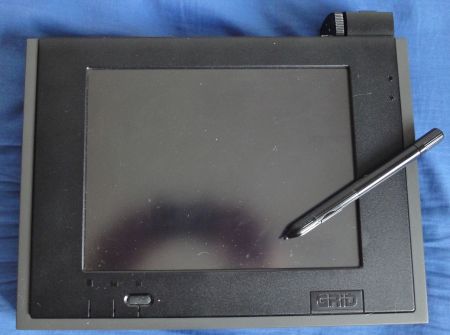
GRiD was a legendary company that existed from 1979. In 1988 it was purchased by Tandy Corporation, whose computer manufacturing division in turn was then bought by AST Research in 1993, which in turn was bought by Samsung in 1996. It was always a company that targeted not the mass market, but niche markets where the price of a product was less important than the technical features. As a result, GRiD had e.g. the first
- clamshell-design portable computer (GRiD COMPASS, 1982)
- use of the Intel 8086 and 8087 floating-point co-processor in a commercial product
- notebook that had a built in hard drive (GRiDCASE 12xx, 1984)
- pen-based tablet computer (GRiDPAD 1900, 1989)
- portable to have a built-in pointing device (GRiDCASE 1550sx, 1990)
GRiD mainly sold solid computers to audiences with special needs, e.g. the military, or NASA.
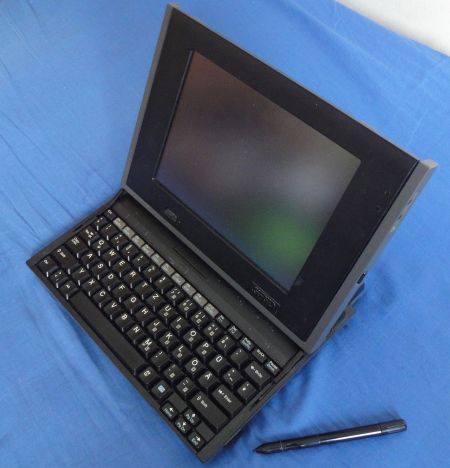
Another one of their “firsts” was the first convertible computer, i.e. a model that could be used as a tablet and as a notebook computer: the two models 2260 and 2270 from 1992.
Except in the recent time there weren’t that many convertibles out there because a convertible needs a market demand for a tablet computer that then also shall be used as a notebook as writing text a lot is a pain on a tablet. Pen-based tablets were a hot topic in the first half of the 1990s. Afterwards, pen computing by and large vanished from the list of hype topics (with the notable exception of pen-based PDAs from 1996 to the early 2000s). Only with the (re-)advent of touchscreen-based User Interfaces by Apple’s iPhone from 2007, tablets re-appeared from 2009, this time without needing a pen. With the new interests in tablet computers, also convertibles re-appeared on the market.
Back to the GRiD 2270. In 1992, GRiD presented the convertible computer in two models (2660, 2670) that differed only internally. Both models were PCs that offered both a tablet mode using a Wacom pen subsystem and a notebook mode with a compact, but full-fledged keyboard. Both models had a 9.5″ 64 gray levels VGA LCD, a built-in HDD, and 4 MB of RAM. An external FDD could be connected to the parallel port. The 2260 used a 80386SL processor running at 25 MHz, the 2270 a 80486SL processor running also at 25 MHz.
There is a whole slough of names under which the two models are known. To the best of my research, these are officially the GRiD Model 2260 and 2270, respectively. My (German) manual to the 2270 has the title “GRiD Convertible GT” on the front. The Internet knows them also under the aliases “GRiDPAD 2260”, “GRiDPAD Convertible 2260”, and “GRiD Convertible 2260”. As AST models, they were known under the designation AST PenExec 3/25SL and 4/25SL, respectively.

There were two battery options, a small one and a big one. The batteries were NiCad and there are two peculiarities about it. First, you can load the battery directly from the PSU without a need for the computer as the battery has the power interface. As a consequence, you cannot power the computer without the battery because the computer does not have another power interface.
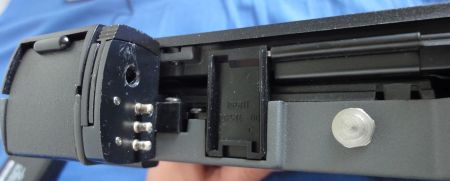
Second, the battery hangs on two metal heads from the computer. To connect the battery, after putting the battery on the heads, you move the battery to the right where a peg goes into a hole.

The peg is then secured by a flap that needs to be pressed down.
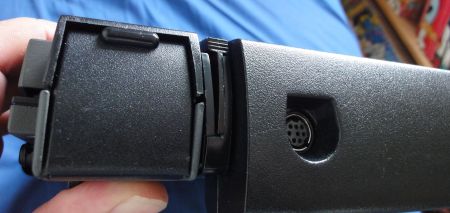
That’s a quite special arrangement. Especially as the big battery that I have cannot hand freely from the computer, but is some millimeters thicker than the computer case. As a consequence, when placing the computer on a flat surface, the battery raises away from the heads and looks awkward. Probably, the smaller battery fits better onto the case.
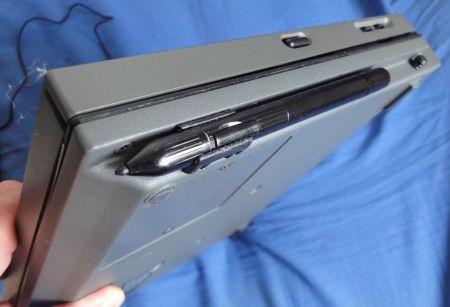
The system has the typical WACOM pen, and the usual problems finding a space at the device for storing it. Their solution was a somewhat flimsy pen holder in a niche on the right lower part. This solution is not ideal, so in order to fix it, there is an accessory which consists of a string attached to a cap which can be put on top of the pen. The other side of the string is to be attached in a hole that exists for that purpose in the case.
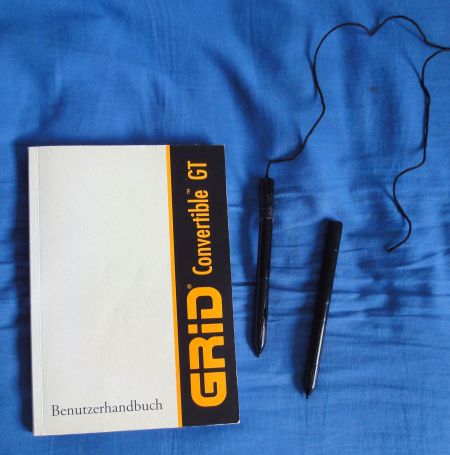
As you might or might not know, I’m rather interested in the PenPoint operating system. This machine falls right into the time period where it could run PenPoint, and there are contemporary GRiD models that were delivered with it, so the question is, was there a PenPoint for the 2260/2270 models? Well, I do not know for sure, but it seems not (according to Dr. Google…). However, there is a mention of a “2260 MIL for PenPoint” file in [http://www.sandyflat.net/digerati/ast486/drivers/grid/index.htm], so maybe PenPoint was initially targeted. We will never know. The hardware, however, could have been easily used, even if the screen in keyboard mode was oriented in landscape, not portrait mode.
Technical Data
Manufacturer: GRiD Systems (AST Research)
Model: 2270
Introduced in: 1992
Initial price: $2995
CPU: Intel 80486SL@25 MHz
RAM: 4 MB (up to 20 MB)
HDD: 80 MB or 120 MB
OS: MS-DOS 6.0, Windows 3.1
Screen: 9.5″, 640×480, black and white, LCD, 64 gray levels
Battery: NiCad, 2.3 Ah, 9.6V, 0.6 Kg (this might be the larger one)
Interfaces: serial, parallel (also used for external FDD), VGA, 1 Type 1 PCMCIA
Weight: 2.1 kg without battery
References








